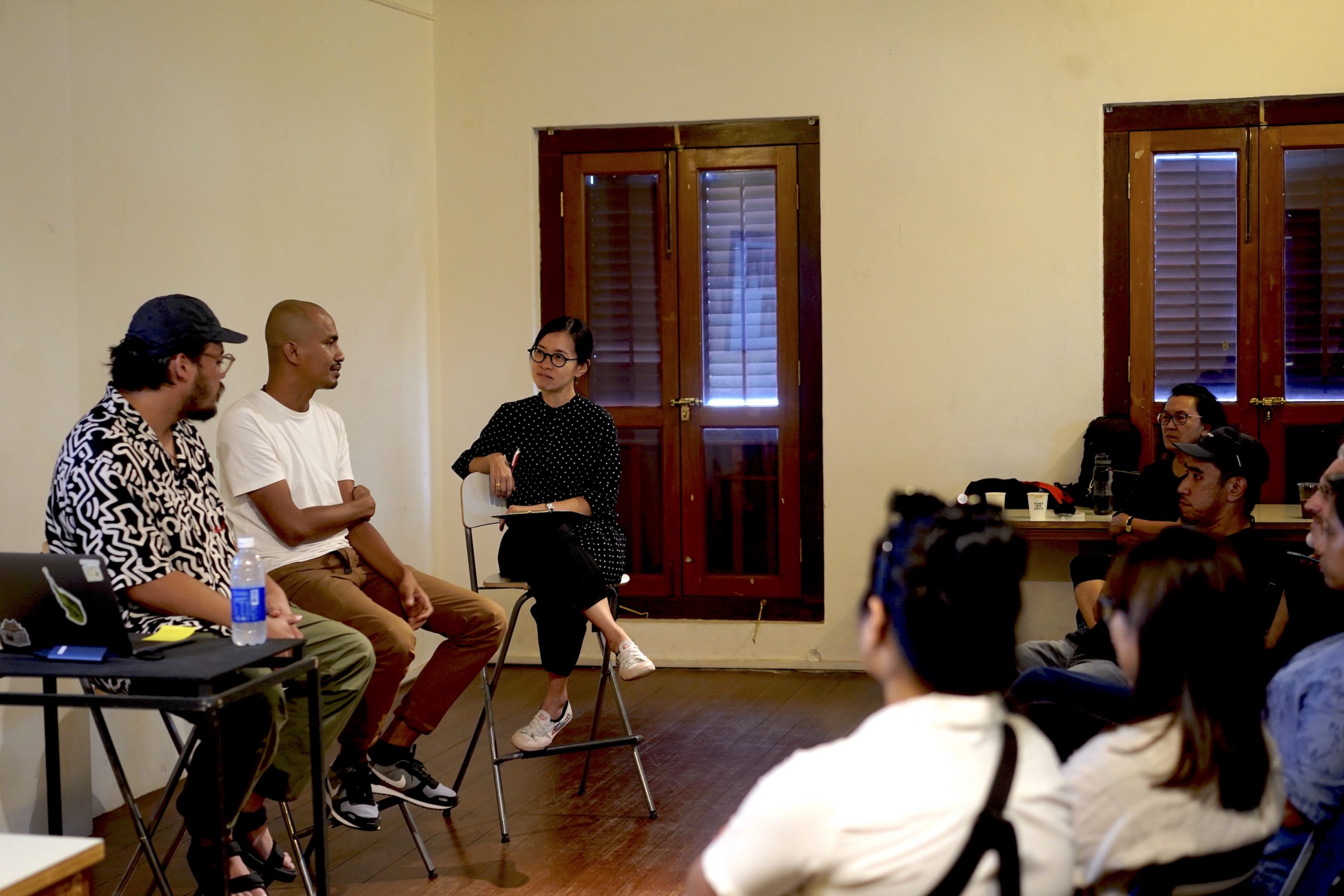A conversation with Jomar Tingson and Muhammad Fadli on ‘Ang Palaboy at Ang Tatlong Krus’ (The Vagrant and the Three Crosses)
Filipino photographer Jomar Tingson, recipient of the Objectifs Documentary Award 2022 (Emerging Category), presented his exhibition, Ang Palaboy at Ang Tatlong Krus, at Objectifs from 30 March till 7 May 2023. Mentored by Muhammad Fadli, Jomar’s show looked at the spiritual and religious beliefs of communities in Paete, Laguna, in the Philippines. By documenting, for instance, the performances of The Centurion Original, a local theatre group that performs the dramatisation of the Passion of Christ each year during Holy Week, Jomar’s exploration of the tension between modernity and tradition, colonialism and native identity, spoke to his own journey in coming to terms with family lore, personal histories and identity.
The following recap presents highlights from Jomar and Fadli’s talk about the process and considerations that went into Ang Palaboy at Ang Tatlong Krus. The session was moderated by Objectifs’ Programme Director Chelsea Chua. This recap has been paraphrased and shortened for brevity.
On the evolution of the project and the photographer’s personal journey
Starting off as just a documentation of the theatre group, The Centurion Original, Jomar spoke about his decision to expand his project to explore how expressions of faith in Paete frequently meld local folklore with Catholicism, and how these practices are reflective of the complex histories, identities and cultures that influence the often syncretic nature of religiosity across the country.
The decision came about through working with Fadli, who helped him realise that the inclusion of the wider community and culture that The Centurion Original stemmed from would provide his project with an important and necessary depth. It was through discussions with Fadli that Jomar also realised he could include a lot of his own writings as accompaniment to his images. The final iteration of Ang Palaboy at Ang Tatlong Krus thus became akin to an inward journey and exploration.
In response to Chelsea’s question to both photographers on what makes them start personal projects, Jomar divulged that he took inspiration from the many road trips which he used to go on, and the stories he would learn from his time spent talking to people. Elaborating on Jomar’s response in his own reply, Fadli said: “It usually starts with what is interesting to the photographer, and what [they’re] curious about. For The Banda Journal, I started working on it after I resigned from news magazine work and became a freelancer. I learnt about the richness of the history of Banda, and how it was ground zero for colonisation because of its role in the spice trade. It was also about my own identity as an Indonesian. I had a deep curiosity about it, because I didn’t know much about it even as an Indonesian. You can be an insider but also an outsider at the same time.”
Referring back to Jomar’s show, he continued: “The project is an inward documentary. It has a different tone from what we have come to expect from documentary projects. We also took a different approach with its sequencing compared to Fighting Demons by Li Xuan (Jomar’s images were divided into three ‘chapters’). This made it more flexible, though we had to operate within the chapters. The editing process was also more fluid to allow for a more poetic process.”

L-R: Jomar Tingson, Muhammad Fadli, Chelsea Chua
On the inclusion of text alongside the images
With text being featured as a major part of the show, Jomar shared that he “included the text because it adds a different layer to the photos”. Derived from postcards that his father sent long ago, when he was out at sea, Jomar decided to include his father’s words as he felt that his father sounded scared and and nervous because he was far from home. This deeply resonated with his own feelings as he was making the project. “There was a lot that I was trying to unpack during that period of time. I was trying to make sense of my images, and at the same time I was going through a crisis of whether or not to become a professional photographer”, he explained.
Feeling that the original text was too descriptive in nature, Jomar decided to work on them with artist Dennese Victoria. Her collaboration on the project set certain conditions and framework for the rewriting of the text, lending it a poetic quality. Their conversations were also an anchor that helped provide solace to Jomar.

Jomar sharing his works during an artist talk with students.
On the decision to photograph solely in black and white
A member of the audience noted that Filipino processions like the one captured in the show were usually colourful and enticing. However, they commented, “when it’s shot in black and white, it gives it a deeper sense of sombreness, and puts them within an introspective frame”. “It is courageous to frame it in this way”, they remarked.
In response, Jomar elaborated that his decision to document the project in black and white also provided a sense of timelessness to the town. “It helped too that the time of the day didn’t matter, and [the colour scheme] fitted the mood of the town. Fadli and I talked about influences, childhood, and religion. All these affect how one subconsciously composes and frames” he added.
Agreeing with Jomar, Fadli said: “Choosing the form helps decide the tone of the story. It’s all about what you’re trying to tell, and a certain mood you’re trying to infuse. Conversely, the story informs the tone. All aspects of our backgrounds influence how we shoot and see.”

Recap by Geraldine Cheng, Apr 2023

